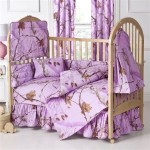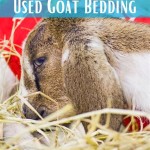What Can I Use For Mouse Bedding?
When it comes to setting up a comfortable and enriching environment for your pet mouse, choosing the right bedding material is essential. Not only does it provide a cozy and warm place for your mouse to rest and sleep, but it also helps with odor control and hygiene. There are several different materials that can be used as mouse bedding, each with its own advantages and disadvantages. In this article, we will explore the best options for mouse bedding and provide detailed information on their suitability, absorbency, and ease of cleaning.
1. Aspen Shavings
Aspen shavings are a popular and widely used bedding material for mice. They are made from finely shredded aspen wood and offer several advantages. Aspen shavings are highly absorbent, meaning they can effectively soak up moisture and keep your mouse's cage dry. Additionally, they have a fresh, pleasant scent that helps neutralize odors and promote a clean and healthy environment for your pet.
2. Paper Bedding
Paper bedding, commonly made from recycled paper, is another excellent option for mouse bedding. It is soft and comfortable, providing a cozy and inviting place for your mouse to rest. Paper bedding is also highly absorbent, preventing the buildup of moisture in the cage. It is also dust-free, which is beneficial for mice with respiratory sensitivities.
3. Cardboard
Cardboard can be a budget-friendly and sustainable option for mouse bedding. It is absorbent and can provide a comfortable resting spot for your mouse. However, it is important to choose cardboard that is free of inks and dyes, as these can be harmful to mice if ingested.
4. Fabric Scraps
Soft fabric scraps, such as fleece or cotton, can be used as bedding for mice. They are comfortable and warm, providing a cozy and inviting environment for your pet. However, fabric scraps can be difficult to clean and may not be as absorbent as other bedding materials.
5. Hay
Hay, commonly used for feeding mice, can also serve as bedding material. It is absorbent and provides a natural and stimulating environment for your mouse. However, hay can be messy and may not be suitable for mice with respiratory issues.
6. Coconut Coir
Coconut coir, made from the husks of coconuts, is a natural and biodegradable bedding material. It is highly absorbent and has excellent odor control properties. Coconut coir is also relatively dust-free, making it a good option for mice with respiratory sensitivities.
Choosing the Right Bedding for Your Mouse
The best bedding material for your mouse will depend on its individual preferences and needs. Consider factors such as absorbency, comfort, ease of cleaning, and potential health concerns. Aspen shavings and paper bedding are generally the most recommended options due to their high absorbency and suitability for most mice.

Safe Beddings For Rats Mice

Which Bedding Is Best For Pet Mice Pros Cons Of Each

What Cages Are Best For Mice

The Easiest Est Diy Hamster Bedding

My Favourite S To Use With Mice

Pet Mice Care Guide How To Keep Your Happy Healthy

Safe Beddings For Rats Mice

How To Design A Habitat For Mice Four Paws International Animal Welfare Organisation

The Easiest Est Diy Hamster Bedding
How To Set Up A Mouse Cage Quora
Related Posts








